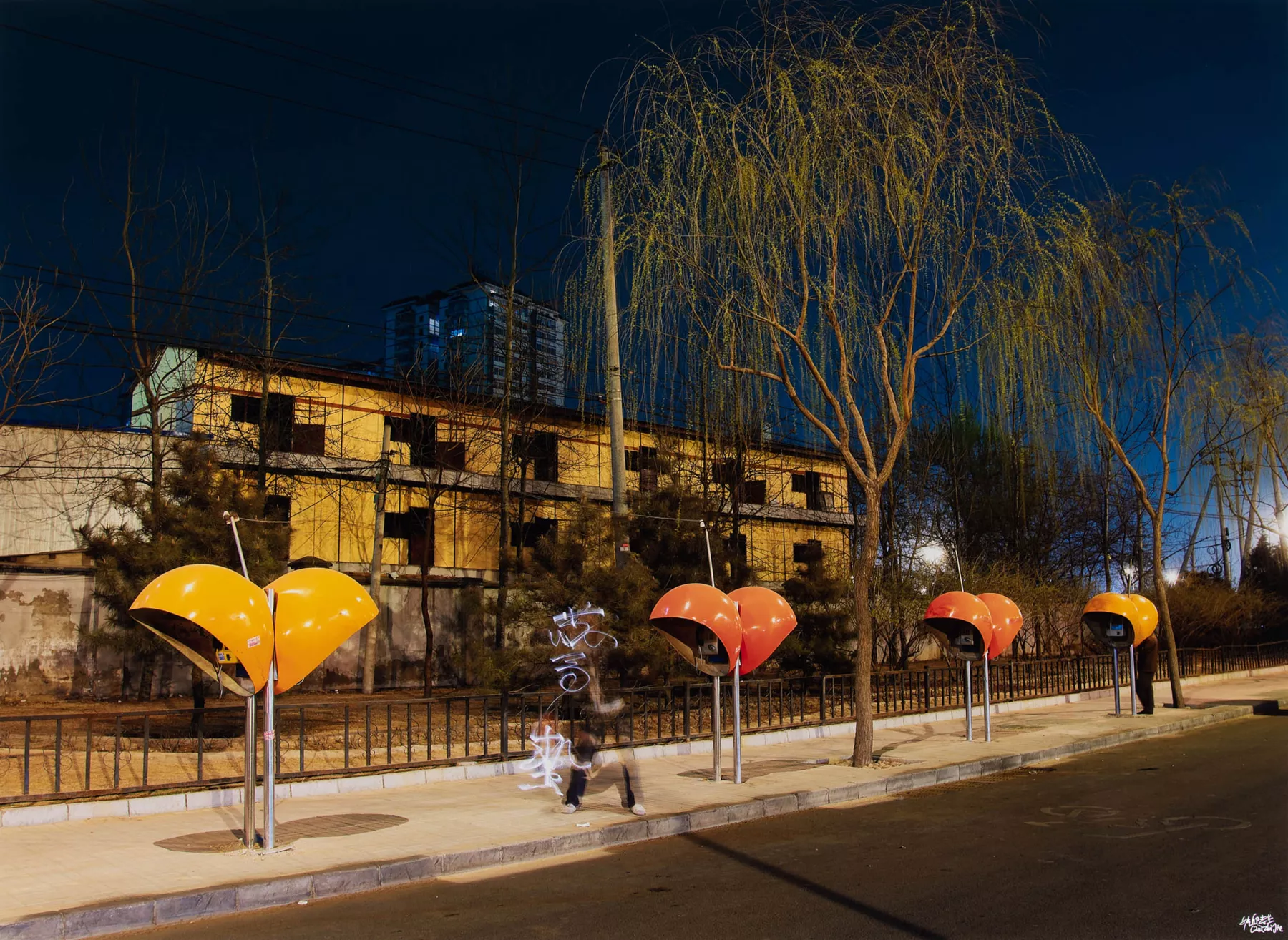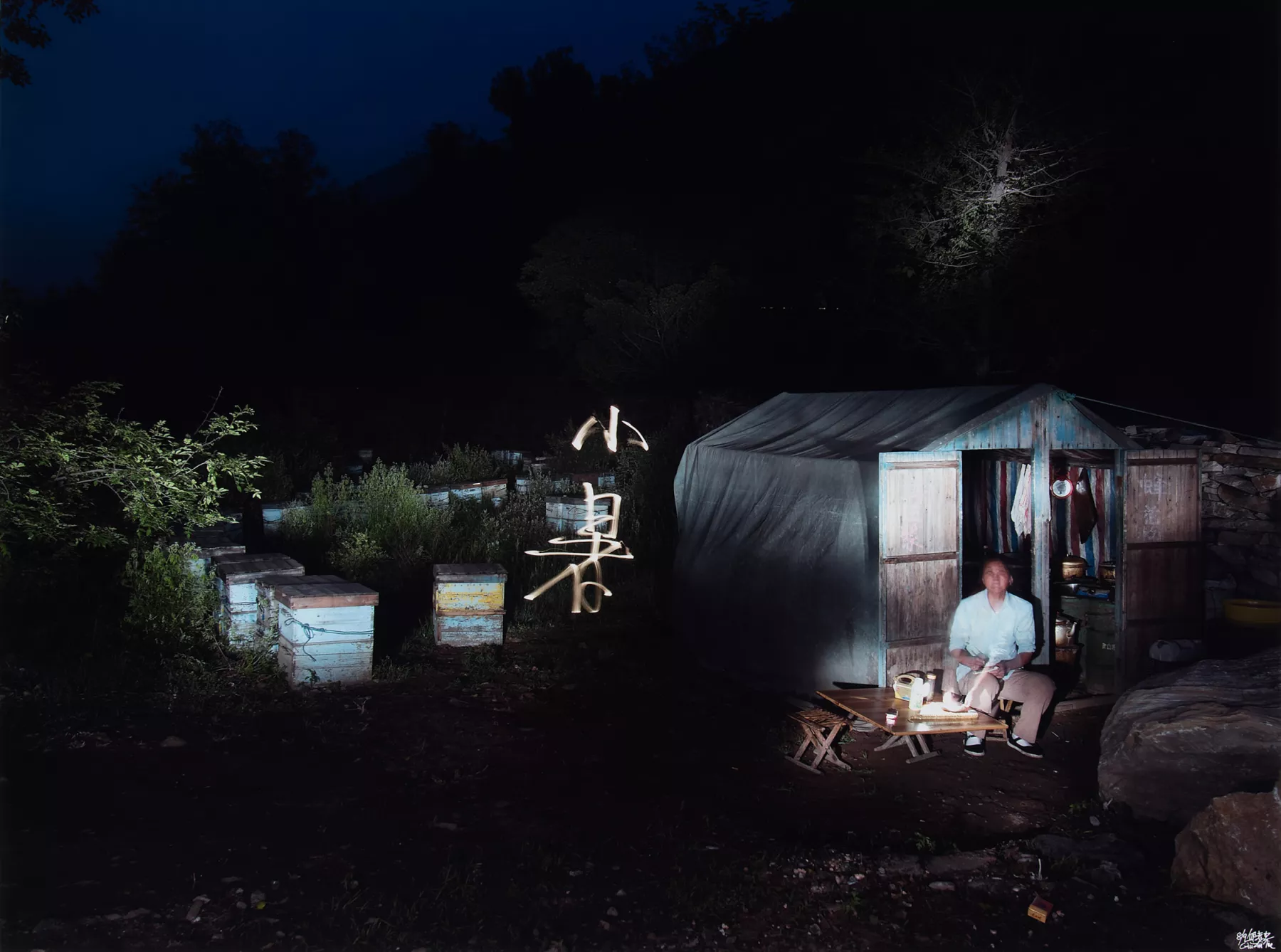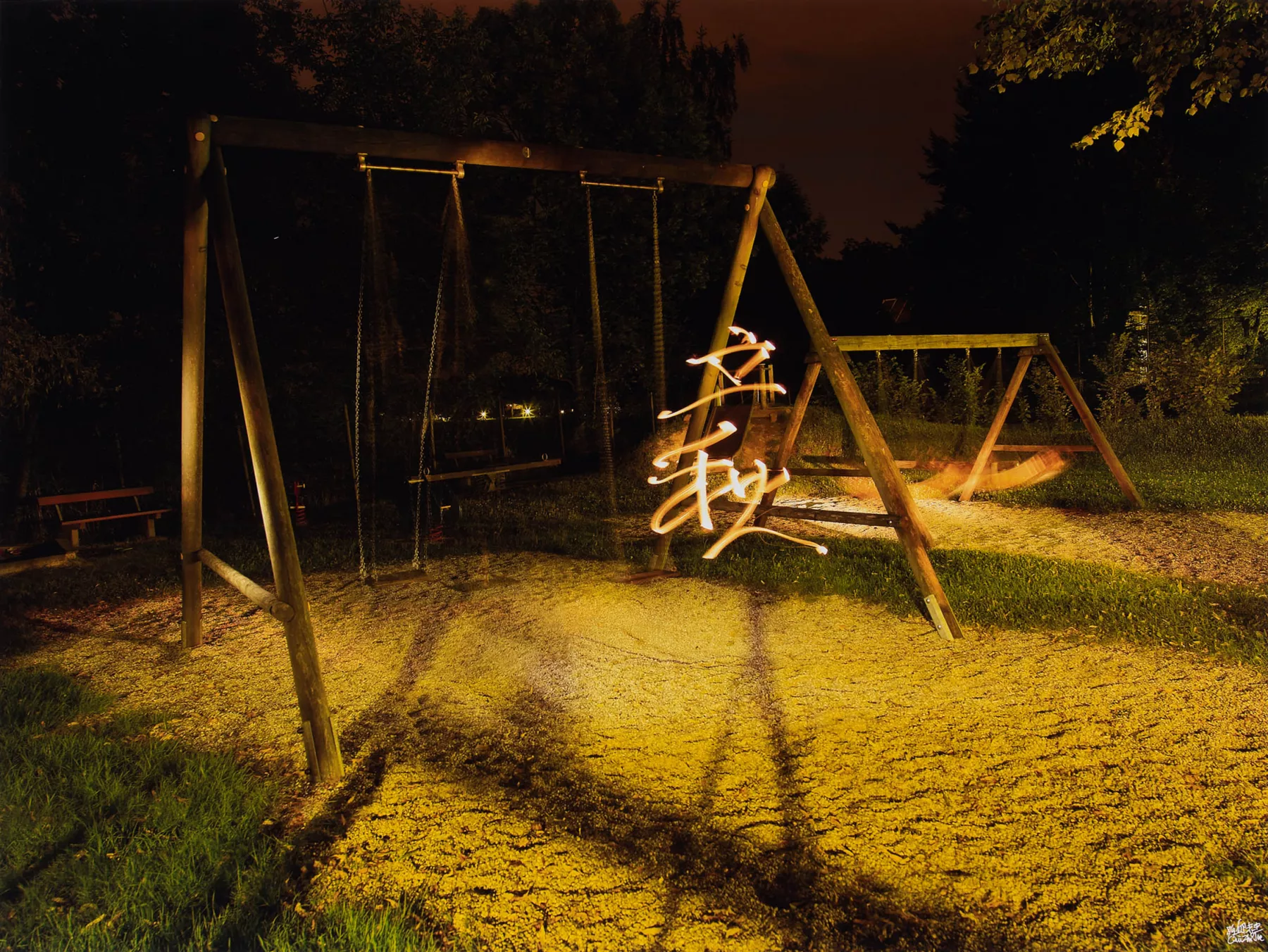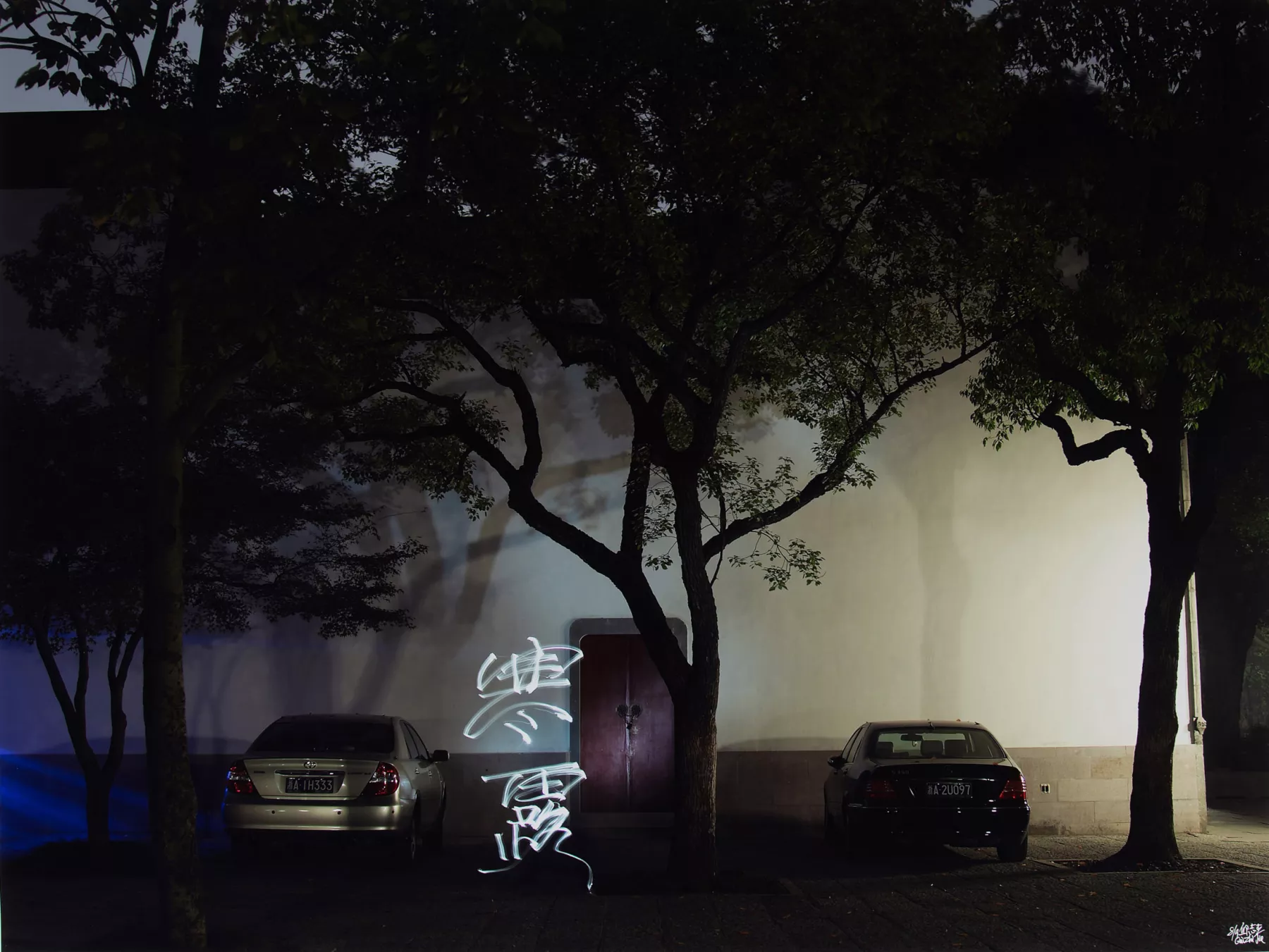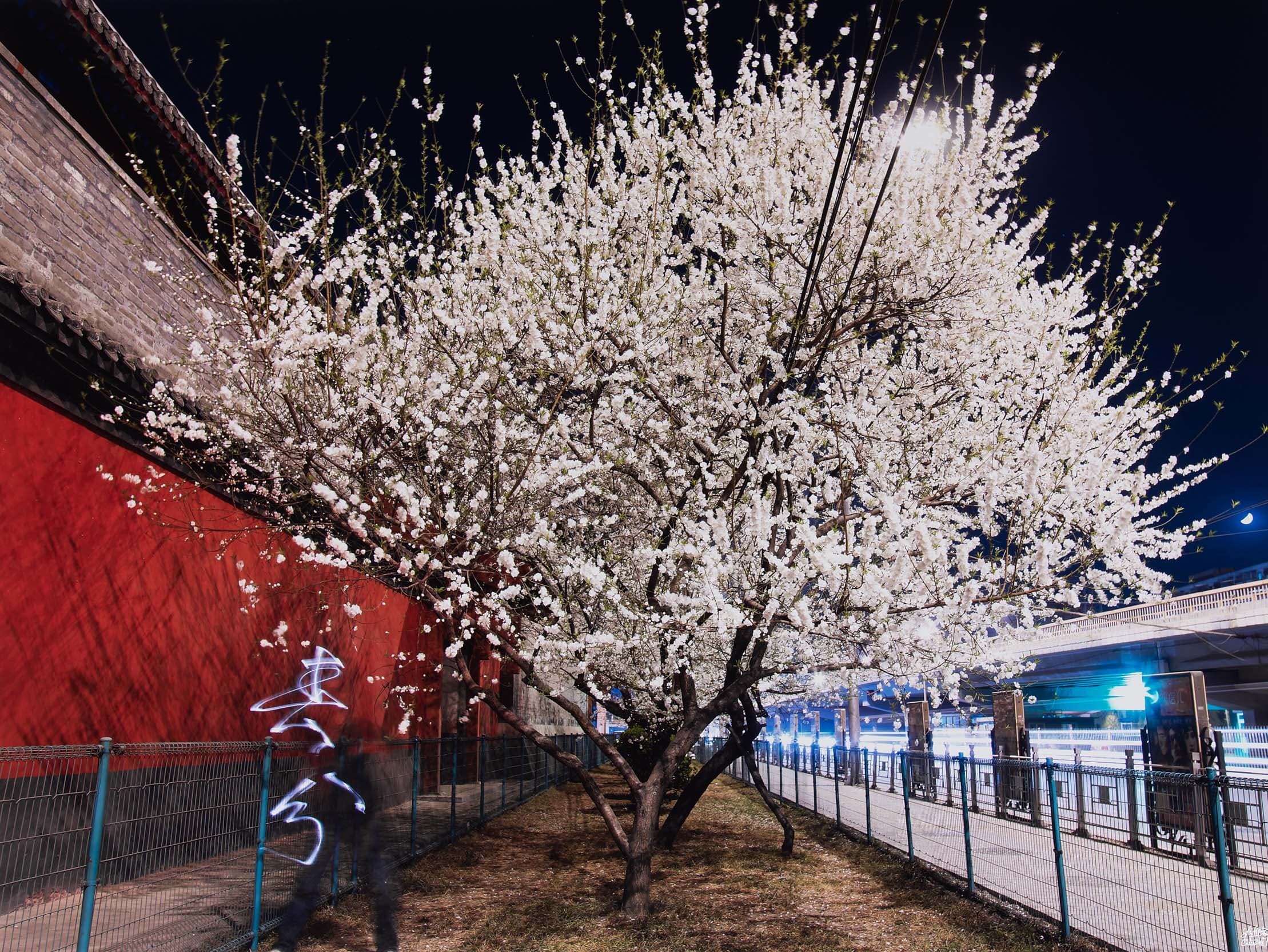QIU Zhijie 邱志杰 (born 1969). Chinese; People’s Republic of China, 2006. Chunfen (春分 The Vernal Equinox), Rear Wall of the Yonghegong Temple, Beijing, No. 4 from the series 24 Seasons (二十四节气 Ershisi jieqi). Color photograph (4th of a set of 24), 41 ¾ x 54 ¾ inches. Gift of the Jack and Susy Wadsworth Collection of Contemporary Chinese Photographs, 2018:28.6d
Twenty-Four Seasons is the second major exhibition drawn from the large and distinguished Jack and Susy Wadsworth Collection of Contemporary Chinese Photographs, which was donated to the JSMA in 2018. This installation presents a series of 24 large-scale digital prints created by the artist Qiu Zhijie (born 1969) and explores critical questions about temporality from multiple perspective as well as the effect of time on individuals, politics, and social change.
Born in Fujian Province, Qiu Zhijie has been a leading figure in conceptual art since the 1990s. He promotes “total art” based on social investigation. His art draws on different art media and diverse traditions. Going beyond the methods that evolved in Euro-American art movements (for example, Richard Wagner’s Gesamtkunstwerk and Adrian Henri’s Total Art), Qiu Zhijie opted instead to create works based on Chinese cultural experience and addressing contemporary social issues. In 2012 he served as chief curator of the Shanghai Biennial and in 2017 as curator of the China Pavilion at the Venice Biennale. He is now a professor at the China Academy of Art in Hangzhou, the dean of the School of Experimental Arts at the Central Academy of Fine Arts in Beijing, and was recently appointed president of the Tianjin Academy of Fine Arts.
Qiu began his monumental Twenty-Four Seasons series in the summer of 2005. The Chinese title Ershisi jieqi denotes a system based on China’s traditional solar calendar, which was standardized during the Han dynasty in the second century BCE. Each jieqi—which can be translated as “solar term” or “seasonal marker” – indicates a 15-day period; 24 of these terms constitute one full year in a system that aligns seamlessly with the Gregorian calendar established 1,500 years later in Europe.
On the first day of each jieqi, Qiu was photographed writing the Chinese name for the jieqi in the air with a specially-designed flashlight. He did this wherever he happened to be at the time so the series presents mysterious characters for the 24 solar terms hovering in urban and rural landscapes both inside and outside of China. Due to the long exposure times, these images render Qiu’s light writing visible, just as paper reveals the brush movements of a calligrapher. Qiu described such composite art as “calli-photo-graphy” – a portmanteau acknowledging the fertile interaction between his calligraphy and photography.
In an essay entitled “Time, Space and Photography,” Qiu remarked:
We always mistakenly think of photography as an instantaneous art form, but forgot that within the period when a shutter opens and closes, what happens is an event, a drama, and perhaps a miracle. The length of time is flexible – it depends on our feelings. Thousands of years can be a blink, and one thought can span three thousand years.
This exhibition was organized by Yan Geng, Curator of Contemporary and Traditional Chinese Art. Generous support for the exhibition, programs, and forthcoming catalogue were provided by the WLS spencer Foundation.
